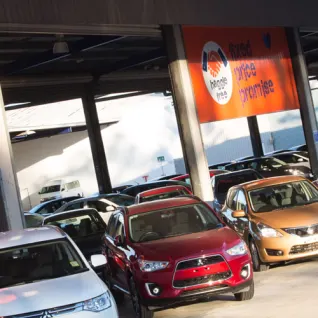
Stability Control VS Traction Control
Posted in Bigbox Motoring Advice
Published Wed Nov 13 2024
The Difference Between Stability Control & Traction Control
Most modern vehicles are equipped with a range of safety features designed to enhance your driving experience and keep you safe on the road. Among these, stability control and traction control are two key systems that are often misunderstood. While they share a common goal—helping drivers maintain control—they function differently and are suited to distinct scenarios.
What is Stability Control?
Stability control, often referred to as Electronic Stability Control (ESC), is a feature that helps prevent skidding or loss of control during sudden maneuvers or slippery conditions. Using sensors that monitor wheel speed, steering angle, and vehicle direction, the system can detect when the vehicle is veering off its intended path.
If instability is detected, ESC automatically applies brake pressure to specific wheels and, in some cases, reduces engine power to guide the vehicle back on course.

When Stability Control is Useful:
- High Speed Corners: If you’re navigating a curve too quickly and the rear of the car begins to slide (oversteer), stability control helps by braking the appropriate wheels to counteract the skid.
- Emergency Evasive Maneuvers: In situations where you need to swerve to avoid an obstacle, ESC helps you regain control if the car starts to fishtail.
What is Traction Control?
Traction control is primarily designed to prevent wheel spin during acceleration. It monitors the speed of each wheel, and if it detects that one wheel is spinning faster than the others, it reduces engine power or applies brakes to the spinning wheel. This ensures that power is distributed to the wheels with the most grip.

When Traction Control is Useful:
- Rainy or Snowy Conditions: When accelerating on a slippery road, traction control prevents the wheels from spinning, providing smoother and more controlled movement.
- Loose Surfaces: On gravel or sand, it ensures the tyres maintain grip and forward momentum.
The Key Differences
While both systems aim to improve safety and control, they operate in different contexts:
| Feature | Traction Control | Stability Control |
|---|---|---|
| Primary Focus | Preventing wheel spin | Preventing skidding/loss of control |
| When it Activates | During acceleration | During cornering or sudden maneuvers |
| Key Action | Controls power to spinning wheels | Applies brakes to specific wheels |
Why People Confuse the Two
The confusion often arises because both systems are linked to maintaining control and frequently work in tandem. For instance, when a vehicle begins to slide on an icy road, traction control might activate to manage grip while stability control steps in to correct the vehicle’s path.
Benefits of Stability and Traction Control
- Enhanced Safety: Both systems reduce the likelihood of accidents caused by loss of control or traction.
- Increased Driver Confidence: Drivers can tackle adverse road conditions more comfortably.
- Better Performance in Poor Conditions: They ensure smoother operation on ice, snow, gravel, or wet surfaces.



When You'll Appreciate These Features Most
- Urban Driving in Wet Weather: Traction control minimizes wheel slip at intersections when accelerating after a stop.
- Road Trips on Winding Roads: Stability control helps manage sharp corners, especially in SUVs with higher centers of gravity.
- Exploring Off-Road: Traction control is invaluable when driving on loose dirt or mud, ensuring you maintain forward momentum without getting stuck.
Conclusion
Stability control and traction control are two distinct yet complementary systems that work to enhance your driving safety. By understanding their differences and how they operate, you can better appreciate the technology that keeps you in control, no matter the road conditions. Next time you’re behind the wheel, know that these advanced systems are working quietly to ensure every drive is a safe one.

Choose.Buy.Enjoy
A better way to buy and sell used cars.





